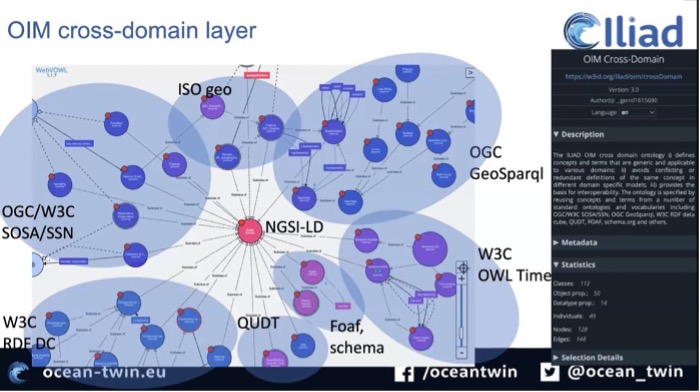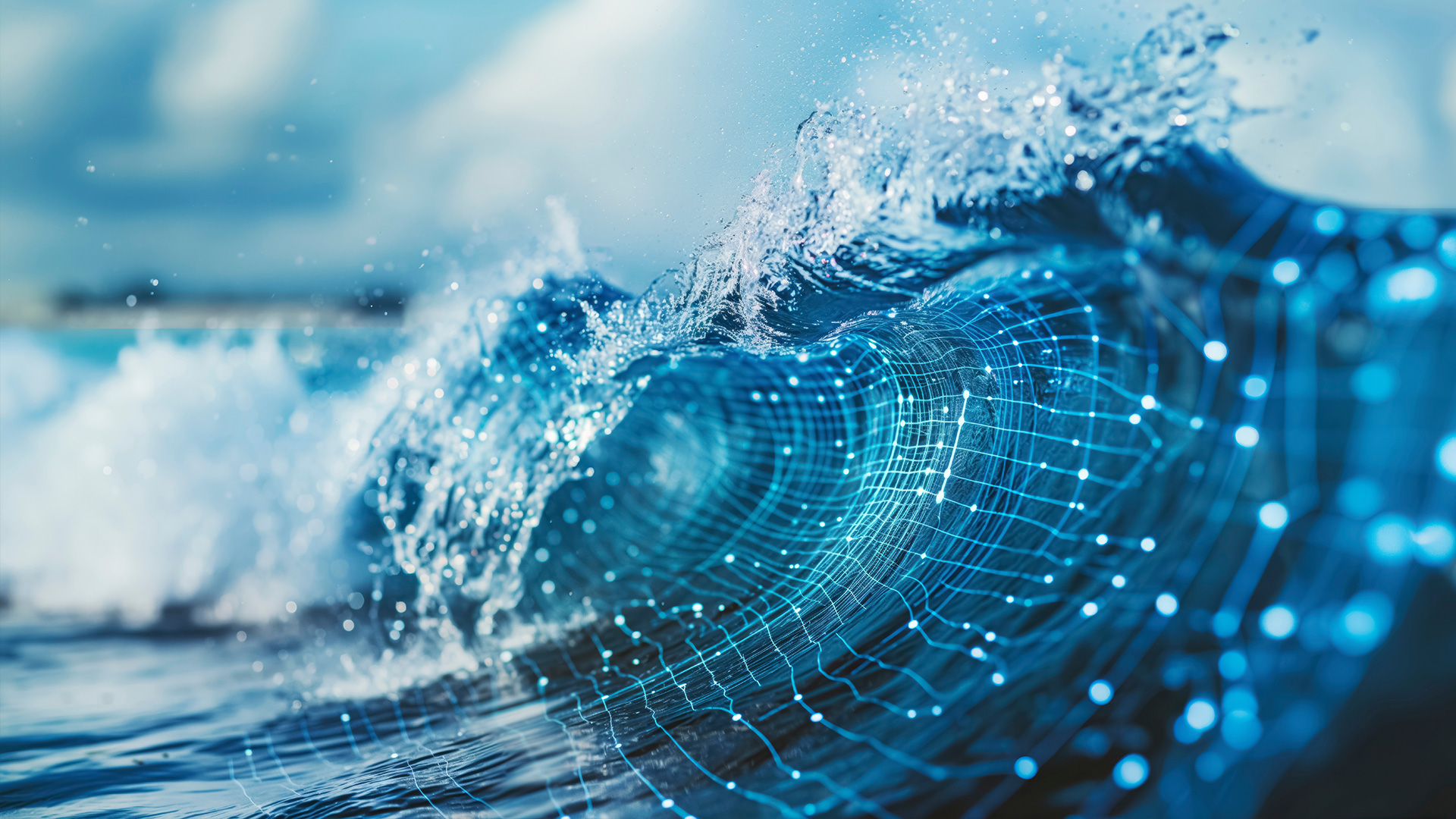Workings of Iliad’s Ocean Information Model detailed in latest webinar
January 15th, 2024
The EU-funded Iliad project, which uses digital twins of the ocean to model complex management scenarios, dedicated the latest in its Iliad Academy series of webinars to Iliad’s Ocean Information Model (OIM). The webinar was held on December 13 2023 and included details on how participants can participate in its further development. The webinar is available on YouTube.
The OIM is essentially a tool for providing full semantic interoperability, based on common ontologies – interrelated sets of concepts within application programming interfaces (APIs), at the highest level within Iliad digital twins of the ocean, explained Raul Palma of Iliad partner Poznan Supercomputing and Networking Center (PSNC).
“Of course, this is aligned with all the initiatives related to data spaces, which are now very prominent in the European Commission”, Palma noted.
Full semantic interoperability “ensures a common understanding of the weaving of exchanged content”, necessarily involving common data models and interoperability mechanisms such as data harmonisation and integration and standard APIs, Palma added.
What Iliads’s OIM is trying to achieve with this approach is to enable the interoperability of the existing models created by various initiatives for various domains relevant to the ocean, leveraging and reusing existing standards as much as possible, instead of continually creating new models, he said.

The OIM is building on previous experience to establish a common data space, enabling the interoperability of different systems and the analysis of data produced by those systems in an integrated manner, Palma said. The OIM is designed modularly with a layered architecture that takes Iliad’s data requirements into account, and is realised as a series of ontologies and corresponding JSON-LD contexts -facilitating adoption by developers - published and accessible via persistent identifiers (PIDs), he added.
Palma included links to the Iliad OIM’s GitHub repository and persistent uniform resource identifier (URI).
Palma detailed the OIM’s modular layers, starting with the cross-domain layer, comprising a generic model re-used by various domain-specific models, providing the basis for interoperability. The OIM domain layer provides a standard reference for sharing information on ocean biodiversity, including a marine biogeography extension, climate and forecast features, and smart data motels allowing data interchange between organisations. The OIM metadata layer is based on DCAT vocabulary facilitating interoperability between data catalogues, integrated data space information models (IDS-IM) and the DQV extension to DCAT with properties for expressing data-set quality.

Semantic interoperability with other vocabularies is provided by the World Register of Marine Species (WORMS) taxonomic database, climate and forecast variables relevant to oceans, and the AGROVOC multilingual controlled vocabulary covering food, nutrition, agriculture, fisheries, forestry and the environment, relevant for Iliad.
The Iliad OIM’s modular approach allows for interoperability with existing models based on alignment by individual modules instead of the model as a whole, as well as extending the domain covered by the OIM by simply adding modules, more efficient maintenance and updates by focusing on specific modules each time, and easier mapping to top-level cross-domain ontologies.
“What’s important here is that you can contribute to the ocean information model with this modular approach, enabling easy collaboration,” Palma stressed, noting that all OIM model modules will be accessible on the OGC Rainbow server, which “applies FAIR principles to the key concepts that underpin interoperability in systems using OGC specifications.” Palma also noted that OIM has linked data pipelines for data harmonisation and integration, allowing data to be represented in a harmonised way.
“Once the data is integrated and harmonised, you can have multiple toolings and applications to analyse the data that is integrated, so you can really leverage the full value of the data, because all the data will be accessible in an integrated way,” Palma said, adding that OIM users can define their own pipelines for data harmonisation and integration.
“OIM provides the common language (lingua franca) to represent data, with explicit semantics so that different components can understand and validate it,” he summarized.
Palma presented the OIM process using the example of Iliad’s jellyfish pilot, combining jellyfish data observations and geospatial coordinates.

